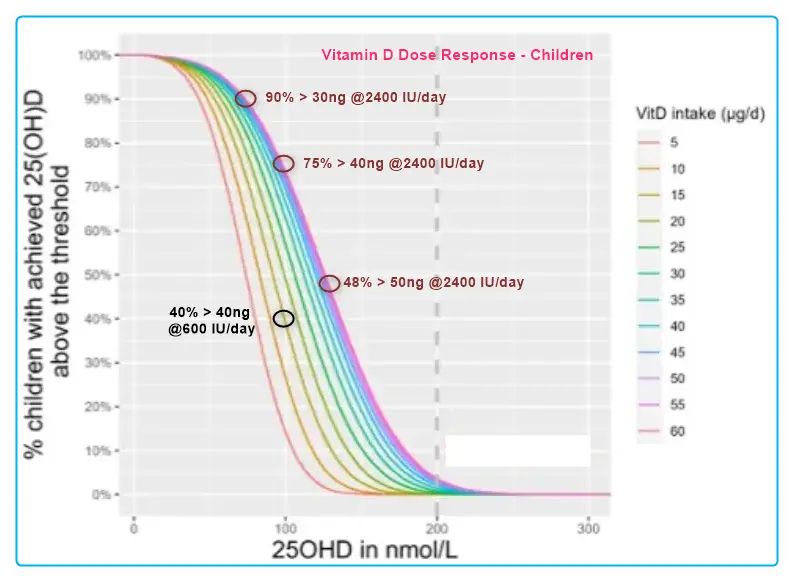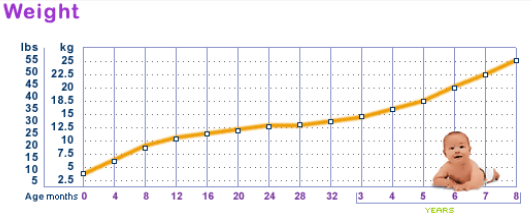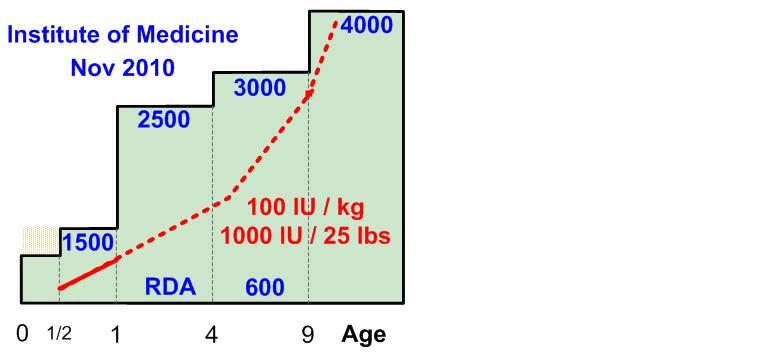2400 IU Vitamin D daily to get 90% of children above 30 ng, etc. – Cashman
Meta-regression of 29 studies of children 0-4 years old
Study does not notice that
4 year old needs about 4X more than newborn
Obese need about 2X more
Children who were preemies need about 2X more

The relationship between vitamin D intake and serum 25-hydroxyvitamin D in young children: a meta-regression to inform WHO/FAO vitamin D intake recommendations
Journal of Nutrition https://doi.org/10.1016/j.tjnut.2024.04.031
Magali RIOS-LEYVRAZ, Laura Martino, Kevin D. CASHMAN

Background
This work was commissioned by the WHO and FAO to inform their update of the vitamin D requirements for children below 4 years old.
Objective
The objective of this work was to undertake multi-level and multivariable dose-response modelling of serum 25OHD to total vitamin D intake in children below 4 years of age and to derive updated vitamin D requirements for young children.
Methods
Systematically identified randomized controlled trials among healthy children from 2 weeks up to 3.9 years of age provided with daily vitamin D supplements or vitamin D-fortified foods were included. Linear and non-linear random effects multi-level meta-regression models with and without covariates were fitted and compared. Inter-individual variability was included by simulating the individual serum 25OHD responses. The percentage of individuals reaching set minimal and maximal serum 25OHD thresholds were calculated and used to derive vitamin D requirements.
Results
A total of 31 trials with 186 data points, from North America, Europe, Asia and Australasia/Oceania, with latitudes ranging from 38°S to 61°N, and with participants of likely mostly light or medium skin pigmentation, were included; in 29 studies the children received vitamin D supplements and in two studies the children received vitamin D fortified milks with or without supplements. The dose-response relationship between vitamin D intake and serum 25OHD was best fitted with the unadjusted quadratic model; adding additional covariates, such as age, did not significantly improve the model. At a vitamin D intake of 10 μg/d, 97.3% of the individuals were predicted to achieve a minimal serum 25OHD threshold of 28 nmol/L. At a vitamin D intake of 35 μg/d, 1.4% of the individuals predicted to reach a maximal serum 25OHD threshold of 200 nmol/L.
Conclusions
In conclusion, this paper details the methodological steps taken to derive vitamin D requirements in children below 4 years of age, including the addition of an inter-individual variability component.
📄 Download the PDF from Vitamin D Life
Vitamin D Life - studies in both categories Infant-Child and How Much
This list is automatically updated
{category}
Vitamin D Life - studies in both categories Infant-Child and Deficiency
This list is automatically updated
{category}
Vitamin D Life – Predict Vitamin D category contains:
{include}
Vitamin D Life – Recommend 100 IU of vitamin D per kg of infant - Poland July 2011 - charts


